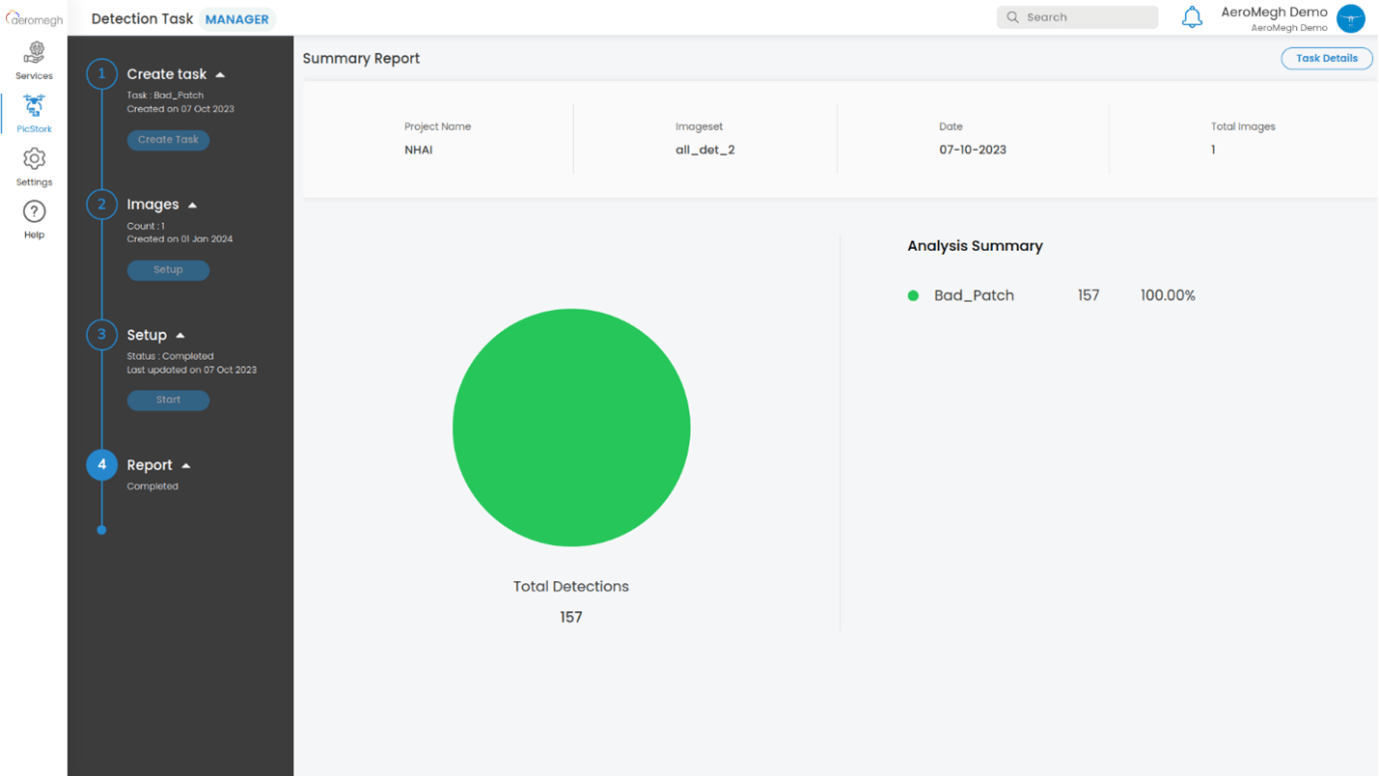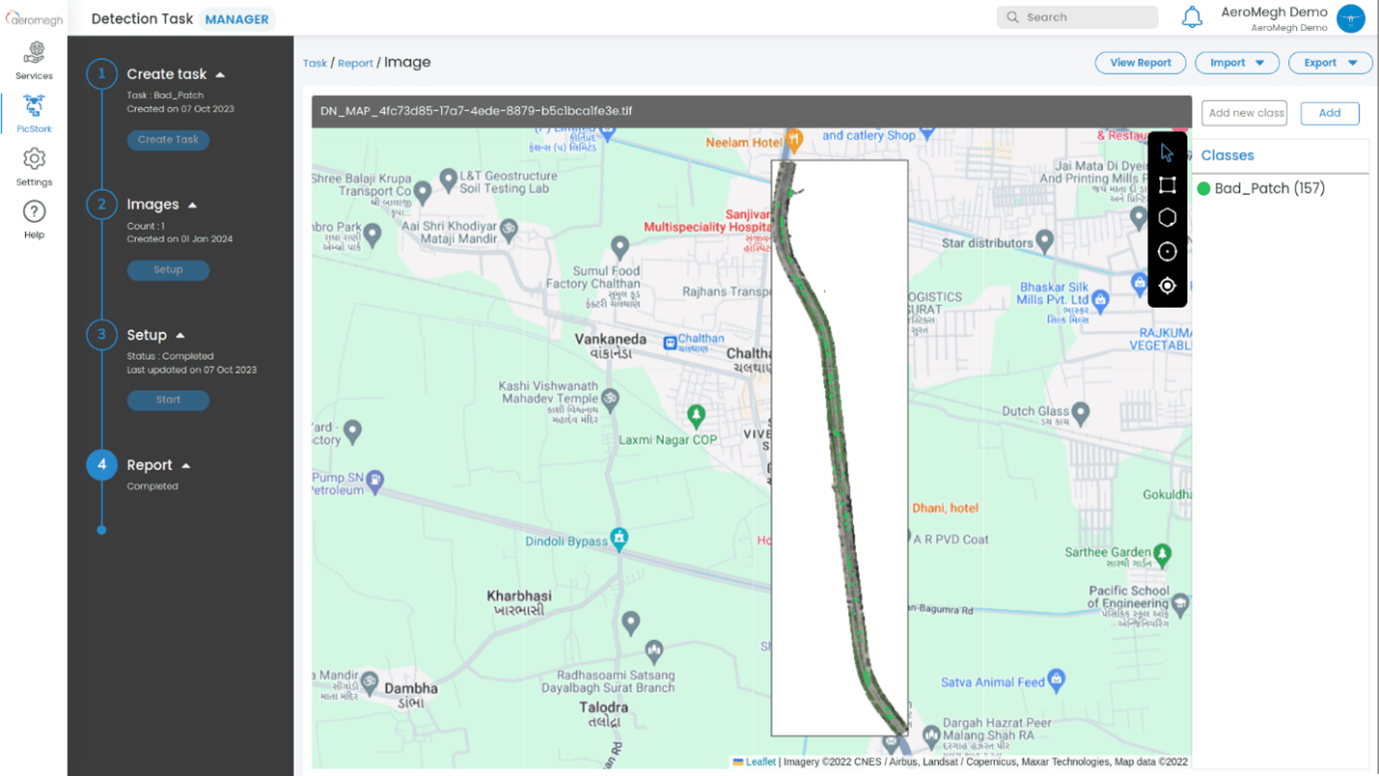PicStork Super 30 Challenge
Title: Transforming Road Repairs: PicStork AI Unleashes the Power of Efficient Infrastructure Management
In an era of innovation, the Bad Patch Detection program emerges as a groundbreaking initiative, spearheaded by PicStork’s revolutionary Bad Patch Buster. In the realm of infrastructure development, irregularities in road networks pose significant challenges. To proactively address issues related to preventative maintenance, enhance road safety, and avert potential hazards, the precise detection of bad patches becomes paramount. PicStork’s mission through Bad Patch Buster is to redefine and elevate road management practices.
PicStork has achieved a remarkable milestone by successfully pinpointing 57 bad patches within a single Geotif image. The model’s accuracy soared to an impressive 81.14% after undergoing training with 200 images. Each bad patch underwent meticulous annotation, reinforcing the detector’s precision through 4000 iterations. What sets PicStork apart is its swift training process, accomplished within a mere hour, showcasing the platform’s unparalleled efficiency.
By directly addressing road irregularities, the Bad Patch Buster significantly enhances efficiency and safety. Swift identification of problems enables prompt fixes, thereby reducing the risk of accidents arising from concealed road hazards. This proactive approach equips construction teams, local governments, and communities with the tools needed to manage their infrastructure effectively. From a cost perspective, PicStork’s Bad Patch Buster outshines traditional human-based detection methods.
While the PicStork system requires an initial investment followed by minimal maintenance, manual inspection demands more expensive labor hours and ongoing human expenses. For those responsible for road maintenance, embracing PicStork translates to heightened operational effectiveness and substantial long-term cost savings.



